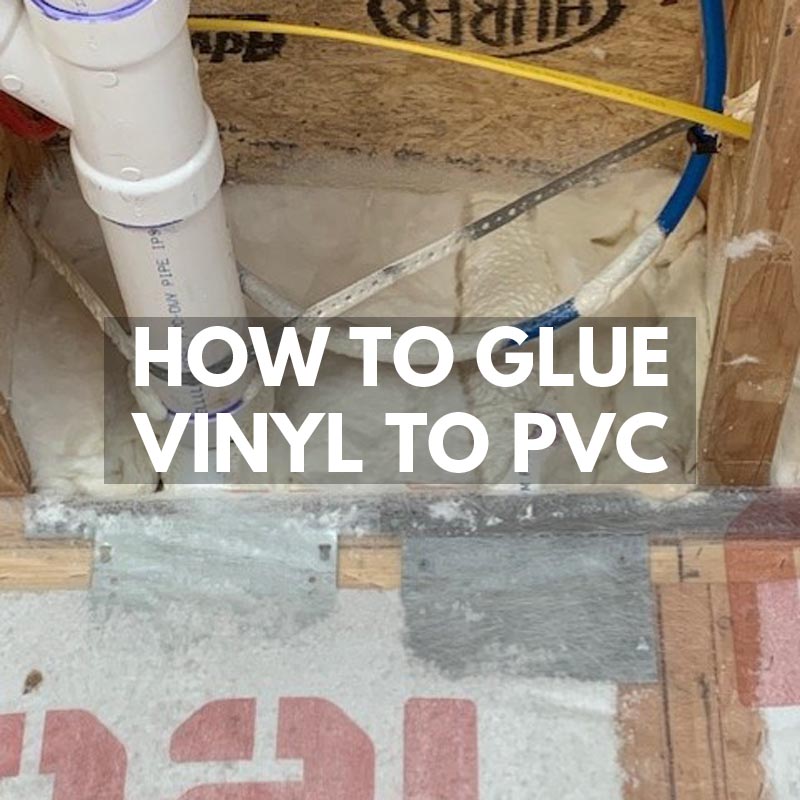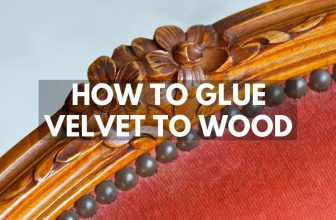
In this guide on how to glue vinyl to PVC, we share the reason why PVC glues don’t work well on vinyl and what you can use instead. You will learn about why vinyl glue is a good choice and whether super glue is suitable too.
How to Glue Vinyl to PVC
Glue vinyl to PVC with relative ease using superglue or glues for vinyl. Polyurethane PVC glues do not adhere to vinyl so don’t even bother with them. There are no special tricks with these glues, but they are quite strong so you don’t need to apply much glue.
Vinyl and PVC are related… the clue is in the name (Poly Vinyl Chloride). However, their material structure is different and thus PVC glues do not tend to work on vinyl.
There are so many variants and applications of PVC and vinyl, that it’s tough to narrow down all the possibilities, so there may be some trial and error (and patience) required here. PVC can be solid like plumbing pipes, and flexible like inflatable pool toys.
The type of glue can change for application due to the rigidity or flexibility of the material itself, and the rigidity of the join imposed by the glue.
Much of PVC to vinyl applications involve tubing. If this is your application, you may want to consider a barb fitting and a hose clamp instead.
Particularly for these reasons:
- If there is any disassembly needed in the future.
- If your project has food and beverage applications.
- High humidity or wet environments (most vinyl glues are water-based)
Which Glue Should You Use for Vinyl to PVC?
The glue you should use for vinyl to PVC depends on your project, however, you want to think “vinyl glue used on PVC” rather than “PVC glue used on vinyl”.
Glues such as; PVC poly urethane, liquid nails, hot glue, and some contact adhesives will not work on vinyl. So your best bet is to try a vinyl glue on PVC.
Two-part epoxy glues, like Araldite, and general solutions like superglue work well on both vinyl and PVC. Your glue choice will also depend on the type, and size, of the application. Below are our recommendations to glue vinyl to PVC.
Loctite Vinyl, Fabric, and Plastic Repair Adhesive
Loctite Vinyl glue has long been the best glue for flexible vinyl because the dried joint itself is quite flexible. Therefore it works well for vinyl and PVC inflatables, and rubberized vinyl tubes joining to PVC nozzles (commonly found in aquariums for instance).
The join can sustain movement and flex but is also suitable for thicker materials. This glue is waterproof and performs amazingly in fixing shoes.
RH Adhesives HH-66 Industrial Strength Vinyl Cement Glue
The HH-66 Vinyl Cement Glue is a strong choice for gluing vinyl to PVC. The glue is thin but don’t let that fool you… it is industrial strength in bonding.
This glue comes in a 230ml (8 FL OZ) tin so it’s best for multiple or bigger jobs. It also comes with a brush in the lid which is great for reducing spills and easy application. Their website suggests 1 Oz of glue per square foot of gluing.
Superglue
As always, superglue bonds just about anything, and gluing vinyl to PVC is one of them. Superglue is best used for small applications due to its bottle size, expense, and extremely short working time.
Superglue dries rigid, so if the join requires some flexibility, it may be better to go for the Loctite option. Due to its extensive range of uses, superglue is better to have on hand than being stuck with a near-to-whole tin of vinyl cement.
Superglue’s solvent is acetone, and I cannot stress enough to have some acetone on hand. Unfortunately, they’ve mostly removed acetone from the cheapest and easiest source… nail polish remover. Worth a look still.
How to Prepare Vinyl and PVC Before Gluing
The good news, there is no special preparation for vinyl and PVC glue. General gluing rules apply;
- Clean the surfaces of dust and dirt. A clean cloth or alcohol wipe is fine.
- Protect your hands with rubber gloves. Especially if using super glue. The amount of time you’ll save by not needing to get super glue off your skin will pay off.

How to Apply Glue to Vinyl and PVC
Applying glue to vinyl and PVC is particular to the application and the glue itself. These glues are quite strong so you don’t need much glue, and you need relatively low pressure to hold the items together.
Apply a small portion to the middle of ONE of the surfaces and then press the surfaces together. Rub the parts together a little, to spread out the glue, but watch for edge spills.
Keep the parts in place by holding them together or use some tape (any tape will work). The above-mentioned glues bond quickly (super glue in seconds) so there should not be heavy clamping needed.
How to Cure Vinyl and PVC Glue
No extra work is needed to cure vinyl and PVC gluing, it will cure by itself. Superglue needs moisture to cure, but the moisture in the air is enough! A guide for curing times;
- Superglue: Bonds in seconds, full strength in 24 hours.
- Loctite Vinyl: sets in 10 mins, full strength in 24 hours.
- HH-66: Sets in less than minutes.
Conclusion
For small and one-time vinyl to PVC gluing projects, use super glue. For larger projects or projects that require flexibility in the glue joins, then check out the HH-66 Vinyl Cement or Loctite Vinyl glue.
We hope this guide on how to glue vinyl to PVC has helped solve your problem and answer your questions. Get in touch or leave a comment if you need help with an adhesion project.










